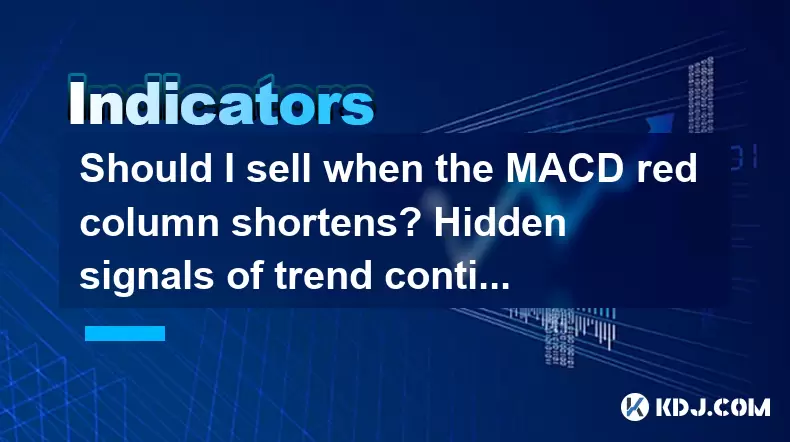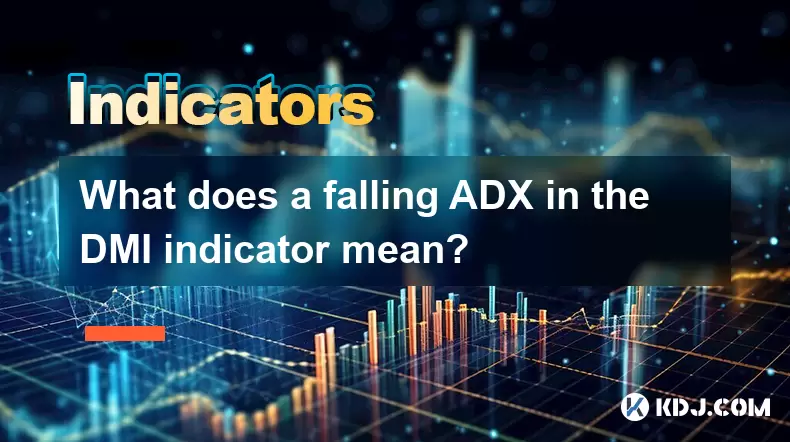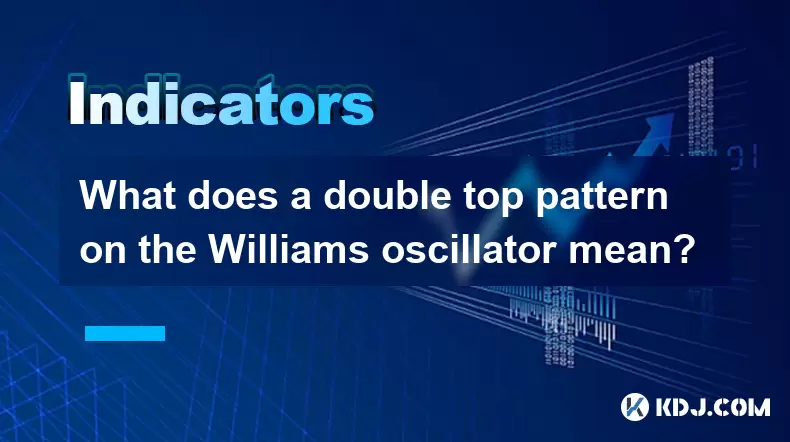-
 Bitcoin
Bitcoin $116700
0.24% -
 Ethereum
Ethereum $3973
4.34% -
 XRP
XRP $3.283
7.68% -
 Tether USDt
Tether USDt $1.000
0.01% -
 BNB
BNB $789.8
2.27% -
 Solana
Solana $176.2
3.31% -
 USDC
USDC $0.9999
0.00% -
 Dogecoin
Dogecoin $0.2238
5.14% -
 TRON
TRON $0.3389
-0.51% -
 Cardano
Cardano $0.7907
4.03% -
 Stellar
Stellar $0.4527
10.02% -
 Hyperliquid
Hyperliquid $41.07
4.27% -
 Sui
Sui $3.794
1.77% -
 Chainlink
Chainlink $19.49
10.40% -
 Bitcoin Cash
Bitcoin Cash $580.9
0.74% -
 Hedera
Hedera $0.2617
4.32% -
 Avalanche
Avalanche $23.41
3.67% -
 Ethena USDe
Ethena USDe $1.001
-0.03% -
 Litecoin
Litecoin $122.4
1.38% -
 Toncoin
Toncoin $3.364
1.49% -
 UNUS SED LEO
UNUS SED LEO $8.988
0.37% -
 Shiba Inu
Shiba Inu $0.00001295
2.82% -
 Uniswap
Uniswap $10.62
5.75% -
 Polkadot
Polkadot $3.922
4.46% -
 Dai
Dai $1.000
0.01% -
 Bitget Token
Bitget Token $4.494
2.15% -
 Monero
Monero $268.0
-1.30% -
 Cronos
Cronos $0.1523
3.68% -
 Pepe
Pepe $0.00001127
4.43% -
 Aave
Aave $285.4
4.85%
Should I sell when the MACD red column shortens? Hidden signals of trend continuation
A shortening MACD red column signals weakening bearish momentum, but traders should analyze divergence, volume, and other indicators before deciding to sell.
Jun 01, 2025 at 04:43 pm

The Moving Average Convergence Divergence (MACD) indicator is a popular tool among cryptocurrency traders for identifying potential trend changes and momentum shifts. One of the common questions traders often ask is whether they should sell when the MACD red column shortens. This article delves into the nuances of this scenario, exploring the hidden signals that could indicate a trend continuation rather than a reversal.
Understanding the MACD Indicator
The MACD is a trend-following momentum indicator that shows the relationship between two moving averages of a cryptocurrency's price. It consists of the MACD line, the signal line, and the histogram. The histogram, which can appear as red or green columns, represents the difference between the MACD line and the signal line. When the histogram shows red columns, it indicates bearish momentum, while green columns signify bullish momentum.
Shortening of the MACD Red Column
When traders observe the red column shortening, it often suggests that the bearish momentum is weakening. This could be interpreted as a sign that the current downtrend might be losing steam. However, it is crucial not to jump to conclusions based solely on this observation. A shortening red column does not necessarily mean an immediate reversal to a bullish trend.
Hidden Signals of Trend Continuation
To accurately determine whether a trend is likely to continue or reverse, traders should look for hidden signals within the MACD and other technical indicators. These signals can help differentiate between a temporary pause in a trend and a genuine reversal.
Divergence Analysis
Divergence between the price action and the MACD can be a powerful signal. If the price continues to make new lows while the MACD histogram shows higher lows, this is known as bullish divergence. Conversely, if the price makes new highs while the MACD shows lower highs, this is bearish divergence. In the context of a shortening red column, the presence of bearish divergence could indicate that the downtrend is likely to continue despite the weakening momentum.
Volume Analysis
Another critical factor to consider is trading volume. If the volume decreases as the red column shortens, it might suggest that the selling pressure is indeed diminishing. However, if the volume remains high or increases, it could indicate that the downtrend is still strong and likely to persist. Traders should monitor volume trends closely to gain a better understanding of market sentiment.
Other Technical Indicators
In addition to the MACD, traders should use other technical indicators to confirm their analysis. For instance, the Relative Strength Index (RSI) can help identify overbought or oversold conditions. If the RSI is still in oversold territory while the MACD red column shortens, it might suggest that the downtrend has more room to run. Similarly, the Moving Average (MA) can provide additional context; if the price remains below key moving averages, it supports the likelihood of a continued downtrend.
Practical Example of Analyzing a Shortening Red Column
Let's walk through a hypothetical scenario where a trader observes a shortening red column on the MACD for a cryptocurrency like Bitcoin.
- Step 1: Identify the shortening red column on the MACD histogram.
- Step 2: Check for divergence. Look at the recent price lows and compare them to the MACD histogram lows. If the price lows are lower but the MACD lows are higher, this indicates bullish divergence.
- Step 3: Analyze the trading volume. If the volume is decreasing as the red column shortens, it suggests weakening bearish momentum. If the volume remains high, it indicates continued selling pressure.
- Step 4: Use other technical indicators like the RSI and MA. If the RSI is still in oversold territory and the price is below key moving averages, it supports the idea of a continued downtrend.
- Step 5: Make a decision based on the combined analysis. If bearish divergence is present, volume remains high, and other indicators support a downtrend, the trader might decide to hold or even increase their short position rather than selling.
Case Study: Bitcoin's MACD Red Column Shortening
Consider a real-world example where Bitcoin's price is in a downtrend, and the MACD red column begins to shorten. A trader would follow the steps outlined above to determine the next course of action.
- Step 1: The trader notices that the red column on the MACD is getting shorter, suggesting weakening bearish momentum.
- Step 2: Upon checking for divergence, the trader finds that Bitcoin's price is making lower lows, but the MACD histogram is showing higher lows, indicating bullish divergence.
- Step 3: The trader then examines the trading volume and sees that it has been decreasing alongside the shortening red column, suggesting that the selling pressure is indeed waning.
- Step 4: The RSI is still in oversold territory, and the price is below the 50-day and 200-day moving averages, reinforcing the likelihood of a continued downtrend.
- Step 5: Despite the bullish divergence, the overall analysis suggests that the downtrend might continue. The trader decides to hold their position and monitor the market for further signals.
The Role of Market Context
Market context is another crucial aspect to consider when analyzing a shortening red column. Factors such as overall market sentiment, macroeconomic events, and news related to the cryptocurrency can influence price movements. For instance, if there is negative news about Bitcoin's regulatory environment, it could overshadow the technical signals and lead to a continued downtrend.
Conclusion and Decision-Making
While a shortening red column on the MACD can suggest weakening bearish momentum, it is not a standalone signal for selling. Traders should conduct a comprehensive analysis, considering hidden signals like divergence, volume, and other technical indicators, as well as the broader market context. By doing so, they can make more informed decisions about whether to sell or hold their positions.
Frequently Asked Questions
Q1: Can a shortening red column ever be a signal to buy?
A1: While a shortening red column typically indicates weakening bearish momentum, it is not a direct signal to buy. Traders should look for additional bullish signals such as bullish divergence, increasing volume on price upticks, and confirmation from other indicators like the RSI and moving averages before considering a buy.
Q2: How often should I check the MACD for signals?
A2: The frequency of checking the MACD depends on your trading style. Day traders might check it multiple times a day, while swing traders might look at it on a daily or even weekly basis. It's important to align your analysis with your trading timeframe and strategy.
Q3: Are there any other momentum indicators I can use alongside the MACD?
A3: Yes, other momentum indicators that can be used alongside the MACD include the Stochastic Oscillator, the Relative Strength Index (RSI), and the Commodity Channel Index (CCI). Each of these indicators can provide additional insights into market momentum and potential trend changes.
Q4: How can I avoid false signals when using the MACD?
A4: To avoid false signals, always use the MACD in conjunction with other technical indicators and consider the broader market context. Look for confirmation from multiple sources before making trading decisions. Additionally, backtesting your strategy with historical data can help you understand the reliability of the signals you're receiving.
Disclaimer:info@kdj.com
The information provided is not trading advice. kdj.com does not assume any responsibility for any investments made based on the information provided in this article. Cryptocurrencies are highly volatile and it is highly recommended that you invest with caution after thorough research!
If you believe that the content used on this website infringes your copyright, please contact us immediately (info@kdj.com) and we will delete it promptly.
- Roman Storm, Funding Effort, and the Looming Defense Retrial: A New York Minute on the Tornado Cash Case
- 2025-08-09 02:50:14
- Crypto's Wild Ride: XRP, Dogecoin, and the Altcoin Surge You Can't Ignore
- 2025-08-09 02:50:14
- Elon Musk, Bitcoin, and the Enduring Power of Approval: A Crypto Love Story?
- 2025-08-09 03:50:15
- Ruvi AI: The Next Big Thing After Ripple on CoinMarketCap?
- 2025-08-09 03:50:15
- Floki Price Surges: Elliott Wave and Fibonacci Setups Point to Potential Gains!
- 2025-08-09 02:30:16
- Pepe Price, RTX (Remittix?) & the $10K ETH Dream: NYC Crypto Chatter
- 2025-08-09 02:30:16
Related knowledge

What does it mean when the TRIX indicator suddenly diverges downward after a long period of convergence?
Aug 09,2025 at 12:56am
Understanding the TRIX Indicator in Cryptocurrency TradingThe TRIX indicator, or Triple Exponential Average, is a momentum oscillator used in technica...

Why is the rise limited after a MACD bottoming divergence?
Aug 09,2025 at 12:07am
Understanding MACD Bottoming Divergence in Cryptocurrency TradingThe MACD (Moving Average Convergence Divergence) is a widely used technical indicator...

What does it mean when the OBV continues to rise but the price is trading sideways?
Aug 08,2025 at 10:35pm
Understanding On-Balance Volume (OBV)On-Balance Volume (OBV) is a technical indicator that uses volume flow to predict changes in stock or cryptocurre...

What does a falling ADX in the DMI indicator mean?
Aug 09,2025 at 03:16am
Understanding the ADX and DMI Indicator FrameworkThe DMI (Directional Movement Index) is a technical analysis tool developed by J. Welles Wilder to id...

What does a double top pattern on the Williams oscillator mean?
Aug 09,2025 at 02:36am
Understanding the Williams %R OscillatorThe Williams %R oscillator is a momentum indicator developed by Larry Williams to identify overbought and over...

What is a nonce and how is it used in Proof of Work?
Aug 04,2025 at 11:50pm
Understanding the Concept of a Nonce in CryptographyA nonce is a number used only once in cryptographic communication. The term 'nonce' is derived fro...

What does it mean when the TRIX indicator suddenly diverges downward after a long period of convergence?
Aug 09,2025 at 12:56am
Understanding the TRIX Indicator in Cryptocurrency TradingThe TRIX indicator, or Triple Exponential Average, is a momentum oscillator used in technica...

Why is the rise limited after a MACD bottoming divergence?
Aug 09,2025 at 12:07am
Understanding MACD Bottoming Divergence in Cryptocurrency TradingThe MACD (Moving Average Convergence Divergence) is a widely used technical indicator...

What does it mean when the OBV continues to rise but the price is trading sideways?
Aug 08,2025 at 10:35pm
Understanding On-Balance Volume (OBV)On-Balance Volume (OBV) is a technical indicator that uses volume flow to predict changes in stock or cryptocurre...

What does a falling ADX in the DMI indicator mean?
Aug 09,2025 at 03:16am
Understanding the ADX and DMI Indicator FrameworkThe DMI (Directional Movement Index) is a technical analysis tool developed by J. Welles Wilder to id...

What does a double top pattern on the Williams oscillator mean?
Aug 09,2025 at 02:36am
Understanding the Williams %R OscillatorThe Williams %R oscillator is a momentum indicator developed by Larry Williams to identify overbought and over...

What is a nonce and how is it used in Proof of Work?
Aug 04,2025 at 11:50pm
Understanding the Concept of a Nonce in CryptographyA nonce is a number used only once in cryptographic communication. The term 'nonce' is derived fro...
See all articles

























































































